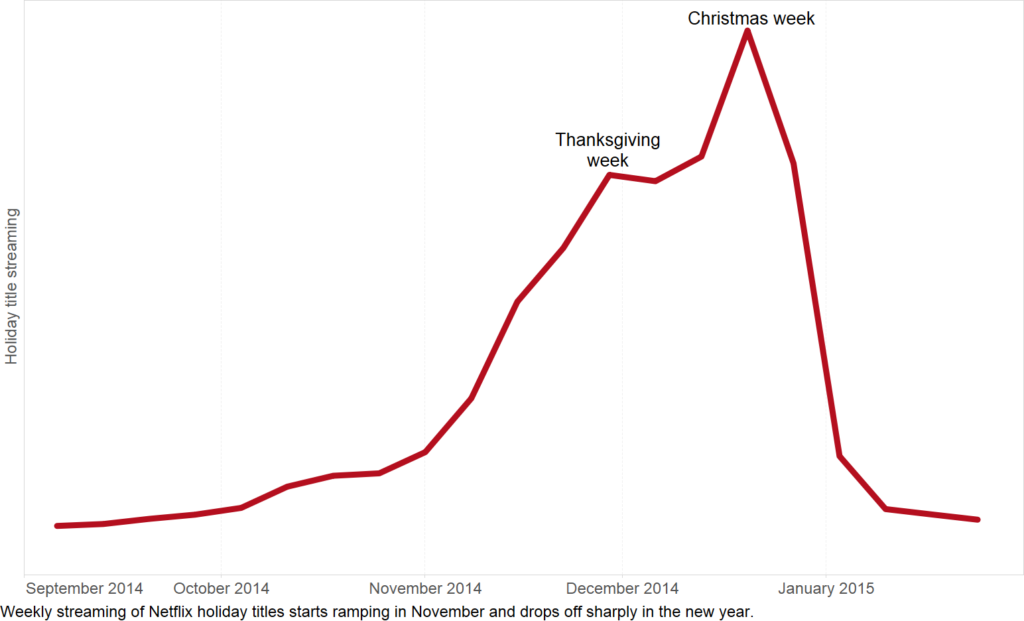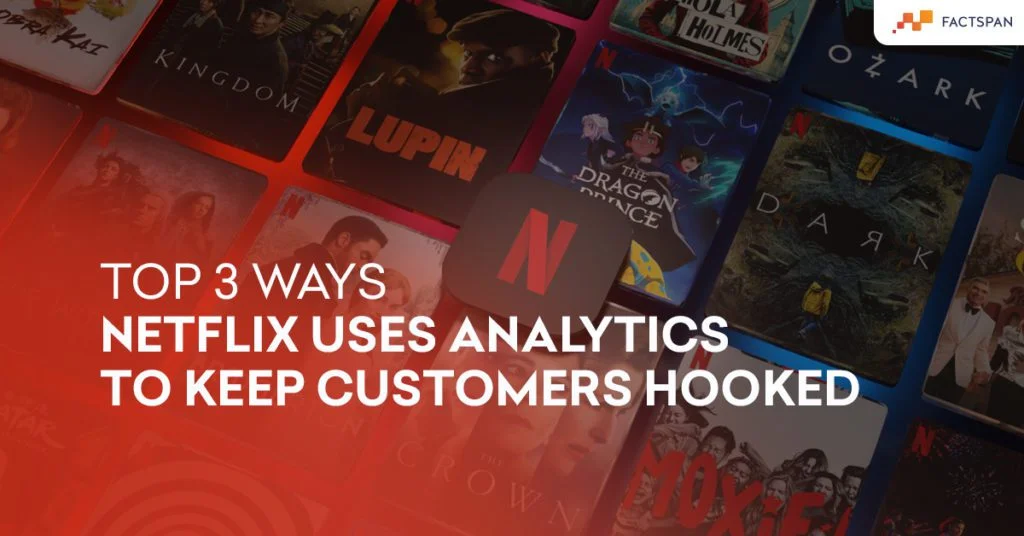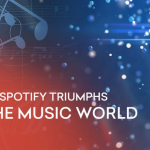Netflix is the leader in the entertainment industry with more than 93 million users worldwide. In fact, Netflix uses analytics to keep customers hooked by collecting data as users log in, browse and watch the content. But, how does it manage to produce shows that the audience loves? The Netflix algorithm jumps to work as soon as users log in. Collects user data while scrolling through the recommendations until they choose something to watch.
Moreover, the subscribers are analyzed from their “watching patterns”. The watching patterns, such as fast-forward scenes, pause timings, device type, and a lot more, are collected under the user’s account. As users watch more content, the recommender engine adjusts and recommends more personalized content with time.
In the big picture, users’ accounts are sorted according to their viewing pattern known as communities. There are a variety of communities, some more niche than others. Netflix compares different communities to find patterns in content to provide the most relatable content which users will likely enjoy. Furthermore, new content acquisition decisions are made by the same data. As you read, you’ll know new ways Netflix uses Analytics to become the best global entertainment distribution service.
Why did Netflix Raise $100 For “House of Cards”?
According to a survey from Cowen and Company, 86 percent of Netflix’s subscribers said they will continue with their subscription because of the show “ House of Cards”. Even more, Netflix won the bid by securing first rights to the show, outbidding HBO and AMC. In fact, data mining and algorithms provided a winning streak for the platform. The platform knows its audience too well to predict the show’s success.
Netflix engineered viewers’ addiction by analyzing – 30 million “plays”, 4 million ratings, and 3 million searches. Also, some shows are released on the platform first and later gain followers as the viewer’s interest grows with time. Hence, Netflix uses vast data set of 29 million subscriber’s viewer habits and preferences.
Read more about 4 Uses of AI in Netflix and Other Streaming Services
How Netflix Stores and Streams Content in Holiday Season?
Netflix has partnered with Open Connect to offer the highest-quality viewing experience and there could be no better time to analyze heavy traffic than in the holiday season.
Open Connect is a custom-built system that distributes and stores the content whenever a subscriber downloads or streams a Netflix title. It teams with Internet Service Providers (ISPs) to deliver content more efficiently. Furthermore, it provides an opportunity to improve Netflix customer’s user experience by localizing subscriber traffic. This system translates the content as close to the subscriber\’s preference as possible to achieve a high-quality playback experience through a very high volume of content with minimal delay over optimal internet paths. Additionally, the holiday season provides an opportunity for streaming platforms to engage a large audience.

In Netflix, holiday binging follows a predictable annual pattern. If we are talking about the Christmas season, more copies of popular titles will be distributed among the network starting in November through their popularity peak at the end of December. But how does the platform know what is popular content? Through Metadata which is gathered by human taggers. Then, Netflix\’s internal content team scrutinizes every metadata to pick out holiday-related titles. Finally, when a subscriber streams the holiday content, the gems from the big data of streaming holiday content suggest the popularity of content.
How Netflix Decides on Which Movies to License
Netflix caters to a large subscriber base of around 33 million global subscribers. Hence, to deliver to its large audience it increases its scope of content every year. They are selective of the titles they add to the platform and license TV shows on exclusive partnerships. They can’t license any popular content as they need to maintain the standard price for their subscribers. Hence, analysis of popular content outside the platform is also very important. They use in-depth knowledge about what subscribers love to watch. Finally, they target those titles that deliver the biggest viewership relative to licensing costs.
In the end, analytics gives enterprises the quantitative and qualitative data they need to make better, more informed decisions and improve their services. The core job of analytics is to help companies like Netflix gain insight into their subscribers. Eventually, Netflix can optimize the analytics results in marketing and delivering better content for its subscribers.










